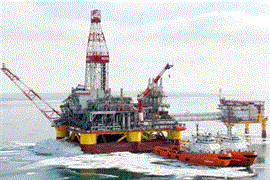Implosion aids earthquake mapping
19 August 2013
The blowdown of Warren Hall, a 13 storey building overlooking San Francisco Bay on the California State University’s East Bay campus, is helping scientists from the United States Geological Survey understand possible earthquake dynamics arising from seismic events on the Hayward fault.
The building was constructed around 610 m (2,000 ft) from the fault line and it was recently decided that it was seismically unsafe. According to news reports, Luther Strayer, an associate professor of geology at the university, contacted the USGS suggesting the use of the implosion. The USGS installed in excess of 600 small seismographs in concentric rings around the building to gather the data it will use. The hope is that the data will help them determine the location of ‘traces’, subsidiary fault lines that run off from the main fault line of equal concern to the scientists. Many of their locations are currently unknown.
Knowing where the ground is most likely to be affected by an earthquake will help planners in Hayward to decide on the location of new housing and other structures. According to USGS estimates, there is a 63% probability of a major earthquake in the San Francisco Bay area within the next 30 years.


